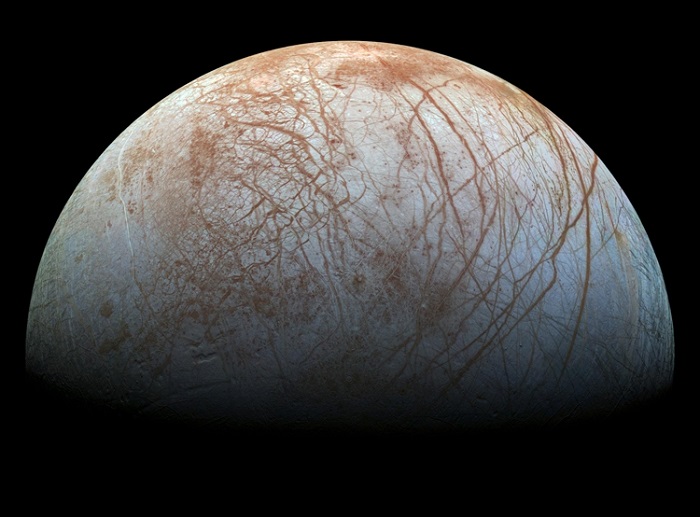Astronomers from Nicolaus Copernicus University in Toruń have discovered a new planet in the constellation Ursa Major. It has a mass 11 times greater than Jupiter, orbits its star in 14 years and has a temperature of no more than minus 100 degrees Celsius. Scientists describe the space find in the journal Astronomy and Astrophysics.
A dim star with a giant planet
Astronomers are dealing with an extremely large exoplanet, with a mass 11 times that of Jupiter, the largest planet in our solar system. It orbits its parent star in 14 years and is six astronomical units away from it.
“We can’t see the planet, but we can see the star it orbits with a small telescope of only 10 cm. The physical parameters of the star are similar to those of the Sun. The data show that it is 20 percent larger. It is twice as large as the Sun and has already completed the evolutionary stage that the Sun is in now, so we can estimate that this is also the age of the entire planetary system,” explains Dr. Habil.
“It is located in the northern part of the sky in the constellation Ursa Major and has the name HD 118203 because it was first listed in the Henry Draper Star Catalog. The star under this number, which was used for the purposes of making observations for this catalog, is currently at our observatory near Toruń,” says NCU Professor Gracian Macejewski, leader of the research team from the NCU Institute of Astronomy.
Draper’s telescope
The Draper telescope was one of the world’s first astrographs, or photographic recorders for recording celestial events. It was built in 1891 as a “memorial” to the prematurely deceased American spectroscopic physicist Henry Draper; he and his wife Anna Maria jointly supported the Harvard Observatory’s ambitious program under Edward K. Pickering to develop a photographic and visual-photographic catalog of stellar brightnesses and their spectral classification.
More than 60,000 photometric and spectral images of the sky were taken with this telescope in Cambridge, furthering Pickering’s aim and compiling an inventory of almost a quarter of a million stars, called the Henry Draper Catalogue. The star designation “HD” is still in use today and is familiar to astronomers all over the world.
How did Draper’s astrograph get to the North? In the autumn of 1947, construction began on the first observatory pavilion of the NKU Astronomical Observatory, a rotating dome with a diameter of five meters. Two years later, an astrograph sent from Cambridge was installed there and, after the necessary adjustments, regular observations began. Today, this interesting landmark, unique in the world, has become a magnet for visitors to the NKU Astronomical Institute in the North.
Patience pays off
Astronomers have known for almost 20 years that a very large planet orbits the star HD 118203. In 2006, the first gas giant was discovered, with a mass equal to two Jupiters, circling the star in a tight orbit in just six days.
“But the Doppler observations showed that this is not the end of the story, that there may be another planet out there. That’s why we immediately included this system in our observation programs,” says Professor Andrzej Niedzelski, co-author of the study and the discovery.
“Initially, we tracked the object using one of the largest optical instruments in the world, the 9-meter Hobby-Eberly Telescope in Texas, as part of the Toruń-Pennsylvania exoplanet research program conducted in collaboration with Professor Oleksandr Wolshchan.”
The results were so promising that Torunli, along with Spanish collaborators, continued observing the star from the Canary Islands using Italy’s Galileo telescope, an observatory equipped with the best equipment for detecting planets.
“But eight years of research have not yet provided an answer as to what kind of object this is,” adds Professor Niedzelski.
It took another seven years for astronomers in Toruń to obtain indisputable evidence that they were dealing with a planet.
“Patience pays off,” says Professor Maceevsky. “New observations collected in March 2023 were decisive in determining the planet’s orbital parameters. Moreover, since it takes several years for a planet to orbit its star, we were able to combine our Doppler observations with existing astrometric measurements to precisely determine its mass. This allowed us to create a complete model of this planetary system and study its dynamical behavior.”
But before that, it was necessary to make sure that there were no other planets in the system. This task was undertaken by astronomy student Julia Serzputovska.
“I analyzed photometric observations from the Transiting Exoplanet Survey Satellite, showing that there are no other planets larger than twice the mass of Earth around HD 118203 and therefore it is not large enough to study the dynamics of the system,” says Yulia Serzputovska.
Planetary tandem
It turns out that astronomers have discovered a hierarchical planetary system.
“This is a special configuration in which one planet forms a close pair with its star, while the second planet orbits the pair in such a wide orbit that it forms another pair, so to speak, with the first,” explains Professor Krzysztof Godziewski, who carries out detailed numerical studies of the system dynamics.
Both planets are large and orbit in fairly elongated orbits, yet their mutual gravitational influence does not destabilize the system over millions of years.
“We showed that this is due to effects originating from the theory of general relativity. If there were no such effects, the planets would behave like nerve springs, constantly changing the shape of their orbits and their orientation in space,” adds Prof. Goździewski.
Cosmic answers
Astronomers are aware that knowledge of the formation and evolution of planetary systems still conceals many fundamental unknowns. Hierarchical systems, such as HD 118203, of which only a dozen are known, allow for the exploration of hypotheses about the formation of massive planets.
“This is an interesting question about the paths of development of such planetary configurations,” says Professor Maceevskyi. “Although from our point of view the inhabitants of the Solar System are quite ‘exotic’, the study of systems with large gaseous planets seems important for us to be able to know our closest ‘astronomical backyard’.”
“Our work is not over. We are still observing and analysing the data; there is a chance for further planetary discoveries,” says Professor Nidzelski. “It is good that we can involve students and PhD students in this interesting and important research.”













